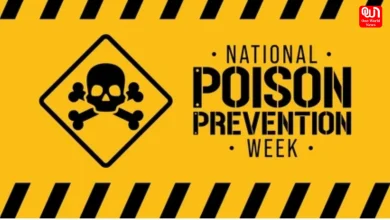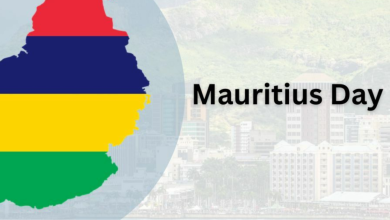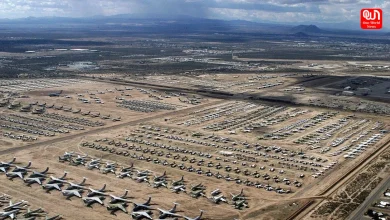Kaam Ki Baat on National Health Mission: How effective the scheme is?

Know what is National Health Mission and role of ASHA worker in it
In the series of Kaam Ki Baat articles, we are going to talk about things that matter to the common public. Here, we are going to keep a close watch on the National Health Mission of the Indian government that was flagged off in 2013 under the UPA government. In the series of articles, we will analyse the effectiveness of all the schemes and campaigns started by the government to improve the health facility and infrastructure in India. We will start by explaining what is National Health Mission and what are the conditions of Asha Workers?
What is the National Health Mission?
The Manmohan Singh government in 2005 launched the National Rural Health Mission to provide affordable, accessible and quality health care to the rural population, especially those who are the most vulnerable. NRHM was initially tasked with looking after the health needs of 18 states that were identified as weak public health indicating states. 8 years later, the same UPA serving its second term, launched the National Urban Health Mission, a sub-mission of National Health Mission. National Rural Health Mission also became the sub-mission of National Health Mission. Combined it was called National Health Mission which has been carried significantly by the BJP government in the last 6 years.
Here is what National Health Mission looked to do:
1. Reduce the Maternal Mortality Rate (MMR) to 1/1000 live births
2. Reduce the Infant Mortality Rate (IMR) to 12 per 1000 live births.
3. Reduce Total Fertility Rate (TFR) to 2.1.
4. Reduction and prevention of anaemia in women between the age of 15 to 49 years.
5. Reduction and prevention of mortality and morbidity from non-communicable, communicable – emerging diseases and injuries.
6. Reduction of household out-of-pocket expenditure on total health care expenses.
7. Annual Malaria Incidence to be reduced than 1 per 1000 thousand cases.
8. Reduce annual mortality and incidence of tuberculosis by half.
9. Reduction of the prevalence of Leprosy to less than 1 per 1000 population and incidence to 0 in all districts.
10. Eliminate Kalazar by 2015 or ensure less than 1 per 1000 population in all blocks.
11. Reduce microfilaria to less than 1 per cent in all districts.
Specific goals for the states were set depending upon the existing levels, context and capacity. State-specific innovations were encouraged. Outcome and Process indicators were developed to reflect quality, equity, efficiency and responsiveness. Targets for the non-communicable and communicable disease was set at state level taking the financing available and based on local epidemiological patterns.
Read more: Is the work culture really toxic in India? Decoding reasons behind it

Seriousness!
Just to give a glimpse on how serious our government and our leaders are for the mission, here is something for you. According to an Indian Express report by Abantika Ghosh, 6 of the 10 ministers who were members of the highest policy group of National Health Mission skipped the annual meeting in February 2018.
The Mission Steering Group (MSG) is the highest steering and policy-making group for it. Its members are Union ministers of health and family welfare, women and child development, drinking water and sanitation, urban development, rural development, Panchayati Raj, minister of state for health, human resource development, social justice empowerment, and housing and urban affairs.
Asha Workers
One of the most important components of the NRHM is to provide a trained female community health activist ASHA in every village. ASHA stands for Accredited Social Health Activist (ASHA) who are selected from the village itself and trained to work as an interface between the public health system and community.
Following are the key components of ASHA:
– ASHA workers are chosen through a rigorous process of selection that involves various community groups, self-help groups, Anganwadi Institutions, the Block Nodal officer, District Nodal officer, the village Health Committee and the Gram Sabha.
– ASHA workers undergo a series of training episodes to acquire the necessary skills, knowledge and confidence for performing their roles.
– The ASHAs receive performance-based incentives for referral and escort services for Reproductive & Child Health (RCH), promoting universal immunization other healthcare programs, and construction of household toilets.
– They are empowered with knowledge and have a drug-kit to deliver first-contact healthcare. ASHA workers are actually a fountainhead for the participation of the community in public health programs in every village.
– ASHA workers are the first port of call for deprived sections of the population for health-related demands, especially for children and women who find it difficult to access health services.
– ASHA also act as health activist who creates awareness on health and its social determinants along with mobilizing the community towards accountability, increased utilization and local health planning of the existing health services.
– They are also a promoter of good health practices and provide a minimum package of curative care as feasible and appropriate for that level and make timely referrals.
– ASHA workers provide information to the public on determinants of health such as basic sanitation & hygiene practices, healthy living and working condition, proper nutrition, information on existing health services and also the importance of timely utilization of health & family welfare services.
– They counsel women on the importance of safe delivery, birth preparedness, immunization, breastfeeding & complementary feeding, prevention of common infection including Sexually Transmitted Infections/Reproductive Tract Infection and at last care of the newborn child.
– ASHAs mobilize the public and help them in accessing health and health-related services available at the primary health centres/Anganwadi/sub-centre, such as Antenatal Check-up, sanitization immunization, Post Natal Check-up supplementary nutrition and other services provided by the health ministry.
– They act as a depot older for essential provisions that are availed for Iron Folic Acid Tablet (IFA), Oral Rehydration Therapy (ORS), chloroquine, Oral pills, Iron Folic Acid Tablet (IFA), Oral Pills, Disposable Delivery Kits (DDK), Condoms and more.
– ASHA worker at the village level cannot function without the help of adequate institutional support. So, village Health & Sanitation Committee, peripheral health workers especially ANMs, the trainers of ASHA, Gram Panchayat are there to help them in the village.
Condition of ASHA workers
Every health scheme that the Ministry of Health and Family Welfare launches, it needs ASHA workers to step in to implement it at its grassroot level. They not only distribute iron tablets to check on immunization schedules of pregnant women and babies, carry out periodic checks on TB patients, they are now watching out signs of coronavirus in their areas and counselling them. ASHA workers in the pandemic are ensuring that migrant workers and other COVID-1p infected are observing the quarantine period. Apart from this, they aware people with pandemic precaution tips.
Millions of ASHA workers associated with 10 central trade unions observed 2-days strike on August 7 and 8 alleging that the government is not honouring the commitment of safety, timely wages, safety, risk allowance, and insurance to them even at the time of pandemic were also part of the protest. The scheme workers demanded the government to withdraw the proposals for privatization of basic services such as nutrition, (including ICDS and MDMS), health (including hospitals), and education. They also demanded the government to sponsor schemes like NHM, ICDS, MDMS permanent with a proper budget, and give them minimum wages of Rs 21,000 every month and pension of Rs 10,000 thousand apart from the ESIC and EPF benefits.
Besides, ASHA workers also demanded safety gears for all frontline workers, PPEs for those who are in containment areas, Rs 50 lakh insurance cover for all deaths during duty. You would be surprised to know that many ASHA workers used to get just Rs 2,000 till 2019,which was raised to Rs 4,000 later.
Have a news story, an interesting write-up or simply a suggestion? Write to us at info@oneworldnews.com







